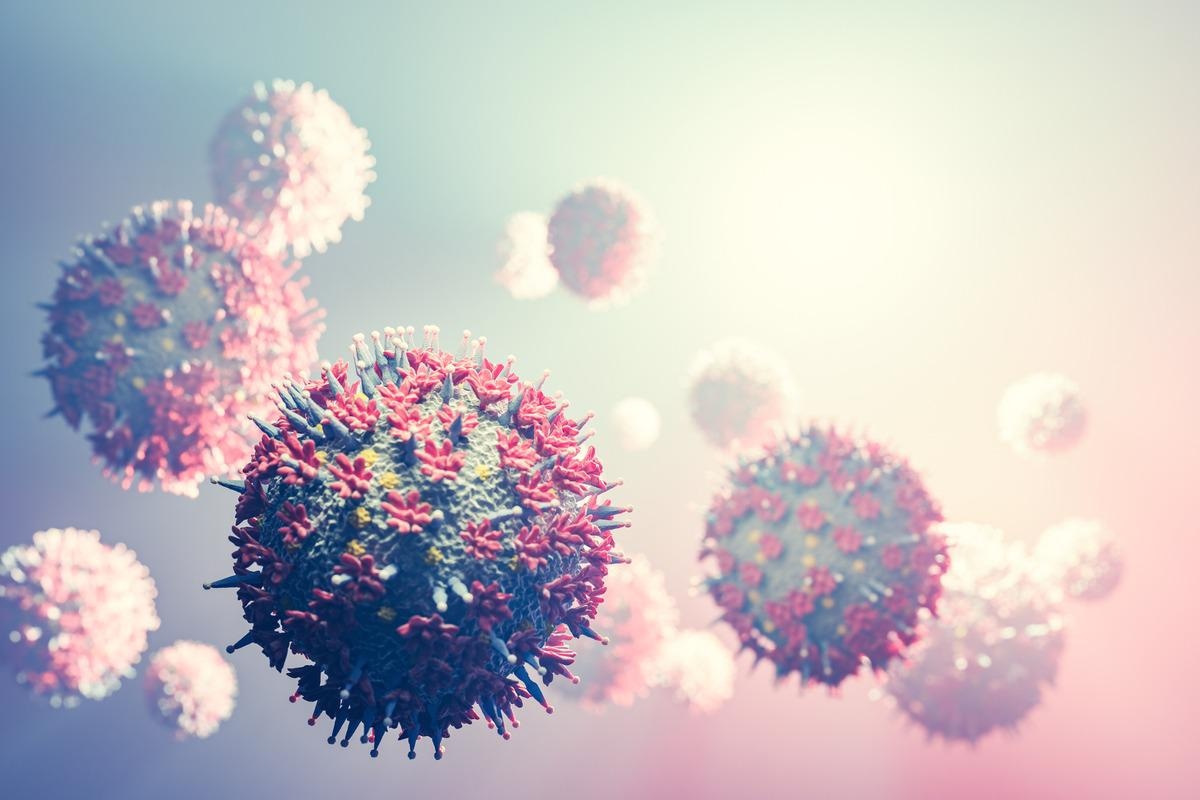Home » Health News »
Early impact of SARS-CoV-2 on human lungs
In a recent study posted to the bioRxiv* preprint server, researchers assessed the impact of coronavirus disease 2019 (COVID-19) on human lung cells.
Widely studied models of pathogenesis suggest the involvement of various types of cells in the manifestation of severe acute respiratory syndrome coronavirus 2 (SARS-CoV-2)-related symptoms. However, the origin and order of molecular signals that target certain cell groups are still unknown.

About the study
In the present study, researchers described an experimental model of COVID-19 infection to explore the early molecular events as well as the pathogenic mechanism of SARS-CoV-2 on a cellular level in the human lung tissue.
The team defined the early steps involved in SARS-CoV-2 infection by obtaining sections of fresh lung tissue from organ donors or surgical resections and subsequently exposing them to SARS-CoV-2. A plaque assay was later performed on the supernatants of the culture. The expression of viral and host genes during COVID-19 infection was further characterized by analyzing the lung tissue using single-cell RNA sequencing (scRNA-seq). The team also explored the junctional processing and structure of the viral RNA molecules by assessing the scRNA-seq dataset against the SICILIAN framework which identifies RNA sequences that mapped discontinuously in a viral genome.
The lung cell tropism of SARS-CoV-2 was determined by directly comparing the infection of different lung cell types in their natural environment. This was achieved by using the most specific and sensitive markers among the cells present in a healthy human lung to detect the types of cells present in the cultures lung tissue and evaluate their viral RNA levels.
Results
The study results showed that the generation of infectious SARS-CoV-2 virions rose between 24 and 72 hours after culturing the SARS-CoV-2-infected lung tissue. The productive infection was subsequently abated by the pre-activation of the viral stocks achieved by the addition of either ultraviolet light, heat, or remdesivir, which is a ribonucleic acid (RNA)-dependent RNA polymerase inhibitor.
The team noted that the number of viral RNA molecules found on each infected lung cell varied widely as almost 99% of the infected cells contained few or no viral RNA molecules while the rest of the infected cells had 10 to over 100 viral RNA molecules in each cell at 24 hours of culture. At 72 hours of culture, almost 0.01% of the infected cells comprised over 1000 viral RNA molecules per cell, which indicated the steep increase in viral production through this period.
The analysis of the scRNA-seq dataset identified subgenomic junctions among the RNA sequence reads, suggesting the production of canonical SARS-CoV-2 mRNAs in the cultured lung tissues. Furthermore, the team recognized several novel subgenomic junctions that indicated the production of varied non-canonical as well as canonical subgenomic viral RNAs during SARS-CoV-2 infection.
The team also identified a total of 55 different molecular cell types in the human lung distributed across the main tissue compartments. These included 80% of the cell types that defined a healthy human tissue with five additional varieties of lymphocytes such as cytotoxic (CD4+) T lymphocytes, γδ T cells, regulatory T cells, tissue-resident memory CD8+ T cells, and granzyme K (GZMK+) CD8+ T cell. The healthy tissue also comprised culture-induced proliferative forms of signaling alveolar type 2 (AT2-s) cells, natural killer (NK) cells, dendritic cells (DCs), and fibroblasts.
Notably, 10 to 20 viral RNAs were found in almost one-third of the lung cell types of the infected cell cultures. Cells having a higher number of viral RNA molecules were rare and were mainly limited to six types of cells which included AT2 cells, lipofibroblasts, myofibroblasts, NK cells, T cells, and macrophages. The team remarked macrophages accounted for 75% of the infected cells with 50 or more viral unique molecular identifier (UMI) per cell. However, such cells having higher viral levels totaled up to only 0.5% of all macrophages which indicated inefficient viral access.
Furthermore, clustering the genetic expression characteristics of macrophages in the cultured lung tissue displayed the separation of the genetic profiles in three different clusters. Among these, one had higher expressions of genes including functions related to mature alveolar macrophages (AMs), such as major histocompatibility complex class II (MHCII) genes, and lipid homeostasis. The second cluster included interstitial macrophages (IMs) that expressed low levels of the AM markers while the third cluster included genes expressing nuclear factor kappa light chain enhancer of activated B cells (NF-KB) signaling and cells similar to IMs.
Overall, the study findings showed that activated interstitial macrophages were the most susceptible target for SARS-CoV-2 infection in the lungs and the prime focus of inflammation. The researchers believe that the present study can be used to further develop therapeutic approaches for lung infections like COVID-19.
*Important notice
bioRxiv publishes preliminary scientific reports that are not peer-reviewed and, therefore, should not be regarded as conclusive, guide clinical practice/health-related behavior, or treated as established information.
- Timothy Ting-Hsuan Wu, et al. (2022). Activated interstitial macrophages are a predominant target of viral takeover and focus of inflammation in COVID-19 initiation in human lung. bioRxiv. doi: https://doi.org/10.1101/2022.05.10.491266 https://www.biorxiv.org/content/10.1101/2022.05.10.491266v1
Posted in: Medical Science News | Medical Research News | Disease/Infection News
Tags: Assay, CD4, Cell, Coronavirus, Coronavirus Disease COVID-19, covid-19, Genes, Genetic, Genome, heat, Inflammation, Lungs, Polymerase, Remdesivir, Respiratory, Ribonucleic Acid, RNA, RNA Sequencing, SARS, SARS-CoV-2, Severe Acute Respiratory, Severe Acute Respiratory Syndrome, Syndrome

Written by
Bhavana Kunkalikar
Bhavana Kunkalikar is a medical writer based in Goa, India. Her academic background is in Pharmaceutical sciences and she holds a Bachelor's degree in Pharmacy. Her educational background allowed her to foster an interest in anatomical and physiological sciences. Her college project work based on ‘The manifestations and causes of sickle cell anemia’ formed the stepping stone to a life-long fascination with human pathophysiology.
Source: Read Full Article



